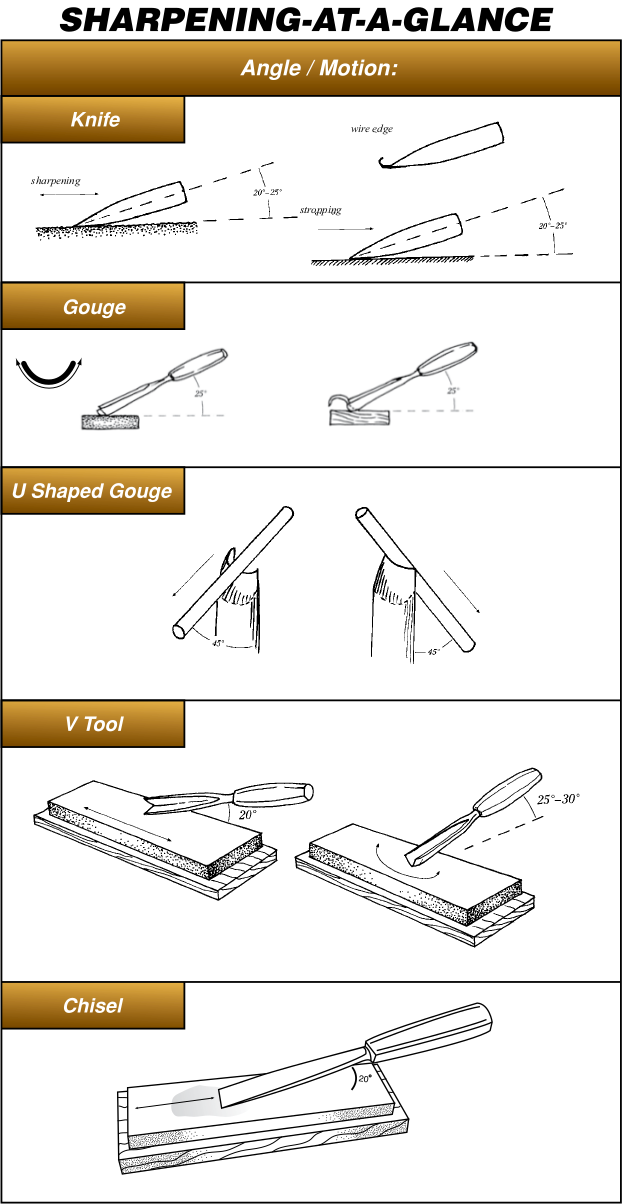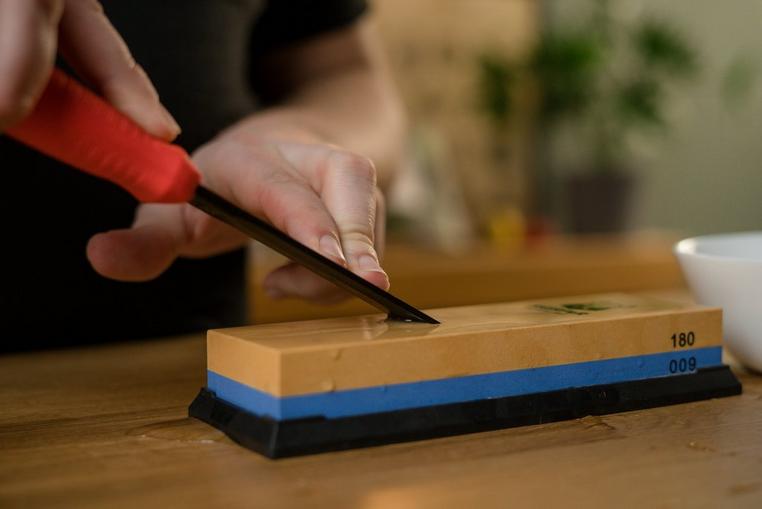Are you curious about whether you can sharpen a chisel with a knife sharpener? Well, you’ve come to the right place to find out! Many people wonder if they can use a knife sharpener to get their chisel back in tip-top shape. In this article, we’ll explore the answer to this common question and provide you with some insights into chisel sharpening.
You might be thinking, “Wait a minute! Can’t I just use any sharpener for all my cutting tools?” While it may seem logical, the truth is that different tools have different sharpening needs. So, when it comes to sharpening a chisel, using a knife sharpener might not be the best choice. But don’t worry, we’ve got all the details on why that is and what alternatives you have.
Join us as we dive into the world of chisel sharpening and unravel the mystery of whether a knife sharpener can do the job. Get ready to discover some fascinating insights and tips that will help you keep your chisels in excellent condition for all your woodworking projects!
Can You Sharpen a Chisel with a Knife Sharpener?
When it comes to sharpening tools, it’s essential to have the right equipment for the job. While a knife sharpener is designed specifically for sharpening knives, some people may wonder if it can be used to sharpen other tools, such as a chisel. In this article, we will explore whether a knife sharpener can effectively sharpen a chisel, and if not, what alternative methods can be used to achieve a sharp edge.
Can You Sharpen a Chisel with a Knife Sharpener? The Truth Revealed
It’s important to note that a knife sharpener and a chisel have distinct differences in their blade shapes and angles. A knife typically has a thin, narrow blade, while a chisel has a thicker and wider blade. Knife sharpeners are specifically designed to accommodate the narrow blade shape and the specific angle at which most knives are sharpened.
Using a knife sharpener on a chisel is not recommended, as it may not effectively sharpen the blade and can potentially damage both the sharpener and the chisel. The blade shape and angle of a chisel require a different sharpening method to achieve optimal results. So, while a knife sharpener may seem like a quick and convenient option, it is not suitable for sharpening chisels.
Alternative Methods for Sharpening Chisels
1. Sharpening Stones: Sharpening stones are a traditional and reliable method for sharpening chisels. They come in various grits, allowing you to start with a coarser stone and gradually progress to a finer grit for a polished edge. To sharpen a chisel with a sharpening stone, simply hold the chisel at the correct angle and move it back and forth across the stone to sharpen the blade evenly.
2. Honing Guides: Honing guides are useful tools that help maintain a consistent angle while sharpening chisels. They can be paired with sharpening stones to ensure the chisel’s blade is sharpened at the desired angle. Honing guides provide stability and control, making it easier for beginners to achieve a sharp edge on their chisels.
3. Belt Sanders or Grinders: Belt sanders and grinders are powerful tools that can be used for sharpening chisels. They offer a fast and efficient sharpening method, but they require a certain level of skill and control. It’s important to use caution and take the necessary safety precautions when using power tools for sharpening purposes.
Pros and Cons of Using a Knife Sharpener on a Chisel
The Pros
1. Convenience: If you don’t have access to other sharpening tools, using a knife sharpener may seem like a quick and convenient option.
2. Portability: Knife sharpeners are often small and lightweight, making them easy to carry around.
The Cons
1. Ineffective Sharpening: The blade shape and angle of a chisel are not compatible with the design of a knife sharpener, making it ineffective for sharpening chisels.
2. Potential Damage: Attempting to sharpen a chisel with a knife sharpener can potentially damage both the sharpener and the chisel itself.
Conclusion: Choose the Right Tool for the Job
While a knife sharpener may come in handy for sharpening knives, it is not suitable for sharpening chisels. It’s important to choose the right tool for the job to achieve the best results. Investing in proper sharpening tools like sharpening stones or honing guides will ensure that your chisels are sharpened effectively and maintain their performance for a long time. So, ditch the knife sharpener and opt for the correct tools to keep your chisels sharp and ready for use.
Key Takeaways: Can You Sharpen a Chisel with a Knife Sharpener?
- 1. It is possible to sharpen a chisel with a knife sharpener, but it may not give the best results.
- 2. Knife sharpeners are designed specifically for straight blades, while chisels have a beveled edge.
- 3. Chisels require a sharpening technique that maintains the bevel and sharpens the entire surface evenly.
- 4. Using a dedicated chisel sharpening system or sharpening stones will provide better results for chisel sharpening.
- 5. It is important to properly maintain and sharpen your chisels to ensure their longevity and optimal performance.
Frequently Asked Questions
Welcome to our frequently asked questions section where we address common queries about sharpening chisels with a knife sharpener. Below, you’ll find answers to some of the most pressing concerns on this topic.
Can a knife sharpener be used to sharpen a chisel?
While it may be tempting to use a knife sharpener to sharpen your chisel, it is not recommended. Chisels and knives have different blade shapes and angles, so using a knife sharpener may not produce the desired results. Additionally, knife sharpeners are often designed specifically for knives and may not be able to accommodate the width and thickness of a chisel blade. To ensure optimal sharpening results, it’s best to use a sharpening method specifically designed for chisels.
Instead of using a knife sharpener, consider using a chisel-specific sharpening tool, such as a honing guide, sharpening jig, or sharpening stones. These tools are specifically designed to maintain the appropriate angle and edge sharpness of a chisel, resulting in better performance and longevity.
Why is it important to use a chisel-specific sharpening method?
Using a chisel-specific sharpening method is essential for several reasons. Firstly, chisels have different blade shapes and angles compared to knives, so using a generic knife sharpener may not achieve the desired edge sharpness. Chisels often require a specific angle to perform optimally, and using the wrong sharpening tool can compromise their functionality.
Secondly, chisels are typically wider and thicker than knives, requiring a more robust sharpening method to remove material and achieve a sharp edge. Knife sharpeners may not have the necessary width or capacity to accommodate the dimensions of a chisel blade, leading to an inadequate sharpening result. To maintain the quality and performance of your chisels, it’s crucial to utilize sharpening methods tailored for chisels.
What are some recommended sharpening tools for chisels?
There are several recommended sharpening tools for chisels that ensure optimal results. A honing guide is a handy tool that helps maintain the correct sharpening angle and produces consistent results. It securely holds the chisel in place, allowing you to achieve a precise and uniform edge.
Sharpening jigs are another popular option, especially for hand-tool enthusiasts. These jigs provide stability and control during the sharpening process, ensuring accurate bevel angles and sharp edges. They are versatile and can be used for a variety of chisel and blade sizes.
Sharpening stones, such as water stones or oil stones, are also highly effective for sharpening chisels. They offer different grit levels to remove material and refine the edge, resulting in a sharp and durable cutting tool. Whichever sharpening tool you choose, make sure to follow the manufacturer’s instructions and take proper safety precautions.
Can a dull chisel be dangerous to use?
Using a dull chisel can indeed be dangerous. When a chisel is not sharpened regularly, its cutting edge becomes blunt and ineffective. This can lead to the chisel slipping or bouncing off the material, potentially causing accidents and injuries. A dull chisel requires more force to perform tasks, increasing the risk of slipping and losing control over the tool.
Furthermore, a dull chisel can compromise the quality of your woodworking or crafting projects. It may leave rough or uneven surfaces, requiring additional sanding or refinishing work. By keeping your chisels sharp, you not only ensure safety but also enhance the precision and efficiency of your work.
How often should chisels be sharpened?
The frequency of sharpening chisels depends on various factors, including the frequency of use, the type of material being worked on, and personal preference. As a general guideline, it’s recommended to sharpen chisels whenever you notice a decrease in their cutting performance. This could be indicated by difficulty in making clean cuts, a need for increased force, or visible bluntness of the cutting edge.
If you regularly work with hardwood or other challenging materials, you may need to sharpen your chisels more frequently. Conversely, if you primarily work on softer materials, you might be able to extend the sharpening intervals. Ultimately, it’s best to sharpen your chisels proactively to ensure optimal performance and avoid potential safety hazards.

Summary
You can’t sharpen a chisel with a knife sharpener because chisels and knives have different angles.
A chisel has a flat edge that needs to be sharpened at a specific angle, while a knife has a beveled edge that requires a different angle. Trying to sharpen a chisel with a knife sharpener will not give you the desired results.
To properly sharpen a chisel, you need a specialized tool called a honing guide that allows you to maintain the correct angle. This ensures that the chisel edge becomes sharp and ready for use.
Remember, using the right tools for the job is crucial for achieving the best results.
